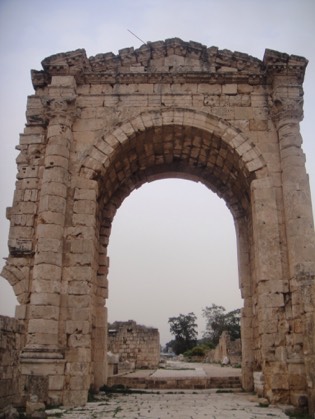Sign up for FlowVella
Sign up with FacebookAlready have an account? Sign in now
By registering you are agreeing to our
Terms of Service
Loading Flow

-The Romans learned from the Etruscans the use of arches to make large openings in a wall
-The physics explaining the conditions required for an arch not to collapse were not fully understood until the XIXth century, yet these arches still stand 2,000 years later

Roman Architecture (Arches)
-The key element for building an arch is the solidity of its side walls which have to withstand the pressure discharged by the keystone through the voussoirs to the springers
-Centina (centring) is the wood structure upon which the stones of an arch were laid during construction